How to water the thuja?
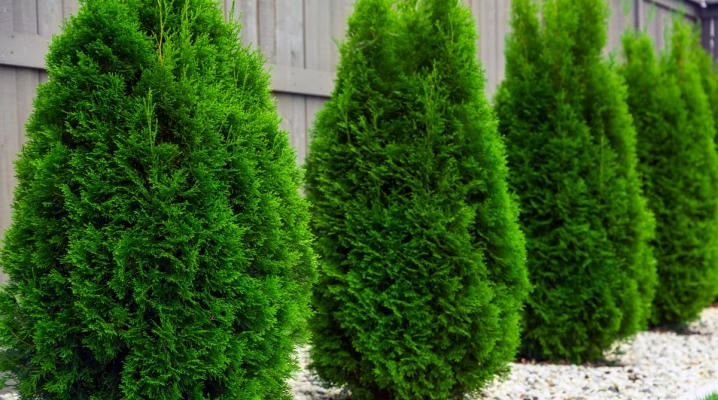
Evergreen shrubs and trees are very much appreciated by summer residents and owners of private houses, as they help create a noble atmosphere on the site, and also do not require complex maintenance. One of them is thuja. This tree not only pleases the eye with its elegant appearance, but also has a pleasant aroma. It is quite unpretentious, but very moisture-loving, so lovers of such specimens need to study the rules and nuances of watering.
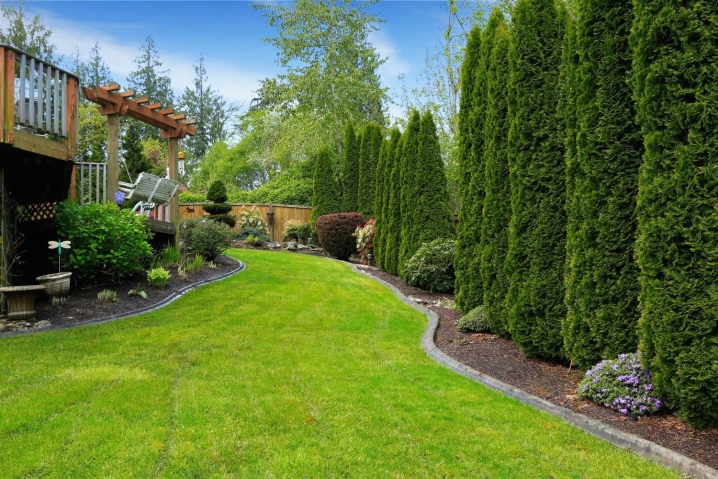
Description
After a cold and gloomy winter, the owners of the plots are eager to put their possessions in order. Thuja is an indispensable item for a luxurious and green design. Many shrubs of contrasting colors are planted next to it, it looks especially impressive. Thuja looks good in group combinations, great for acting as a hedgebesides, it protects the area from wind and street noise. It is often used to cut shapes and make them look like a spiral. Pruning is easy enough and harmless.
One of the main advantages of thuja is unpretentiousness. It is easy for her to pick up the soil, the tree is not afraid of weather disasters. Home care is very simple, no specialists are required. However, if you devote more time to her, the green beauty will look simply luxurious. In addition, thuja contains aromatic oils and phytoncides, which are highly valued in pharmacology and perfumery.
Thuja lovers say that this tree on the site has the most beneficial effect on those who are in the immediate vicinity. It is a great pleasure to sit in the saving shade on a hot summer day. It should also be noted that thuja has the ability to cleanse the air of harmful impurities, and its light, unobtrusive aroma leaves no one indifferent.
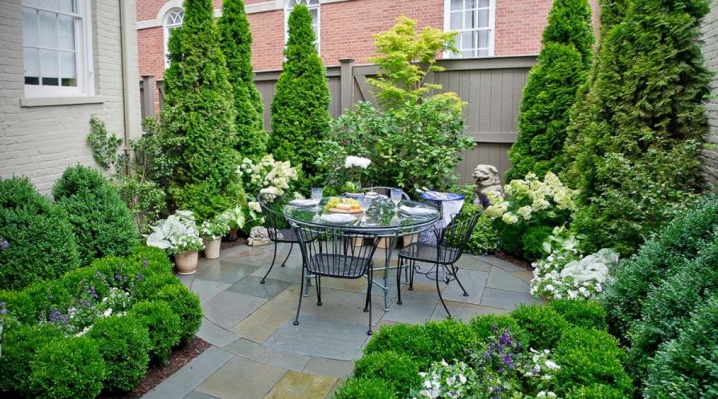
As for the territory of our country, western types of thuja are especially popular here. Their color scheme is different, depending on the taste of the owner of the site, you can opt for green, blue, yellow and even aquamarine specimens. The tree feels most comfortable in light partial shade, however, it will be hard for it without sun rays. Ultraviolet light can leave burns, but its absence threatens to thin the crown. In addition, thuja looks especially beautiful in bright light.
The soil can be any. Both sod with the presence of sand and peat in the composition, as well as clay or marsh areas, are suitable. However, in the second case, a drainage system will be required. Thuja grows not only upwards, but also in width. This must be taken into account when planting and the trees should be placed at a distance of about a meter from each other. Tall specimens that go along the paths should be placed 5 meters apart.
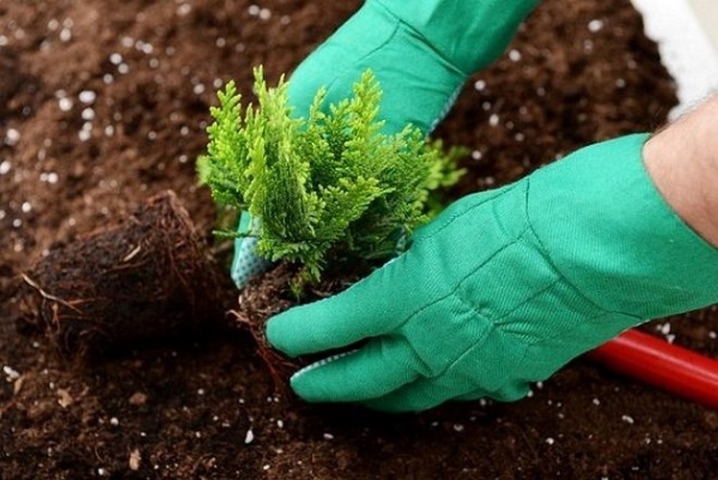
Care after landing
Post-planting care depends on when exactly it was made. To make the tree feel good, the procedure must be done correctly and carefully, otherwise the delicate roots may be damaged. Also an important nuance is the choice of location and preparation of the soil.
Most often, landing events are held in the spring and autumn. Depending on the weather, it can be March and April, September and October.
First of all, consider the spring landing.
- Seedlings will need to be watered abundantly once a week, with an eye on the weather. This is the recommended schedule for warm days.However, if the sun is active and the thermometer rises very high, the procedure should be carried out every 3-4 days. The amount of water is one and two buckets, respectively. The older the plant, the more liquid it will need, especially in hot summer.
- You can use a drip irrigation system for seedlings, as trees are very moisture-loving. Many owners organize automatic watering, it is extremely convenient and does not require time and effort.
- Sprinkling is another important process when caring for thuja. This is especially true when working with seedlings. During sprinkling, the pores of the tree open and it breathes, spreading a delicate aroma around. Since there are scales on the needles, moisture evaporates especially actively, which means that replenishment with water is simply necessary. The procedure is required to be carried out weekly, and in the hot period - daily. The best time to irrigate is in the morning or evening hours, when the sun is not in its active phase.
If the planting was done in the fall, the irrigation and sprinkling procedures do not change. The seedling needs to gain moisture in order to survive the winter calmly. However, it is necessary to focus on the amount of precipitation, since excessive waterlogging can lead to the occurrence of diseases.
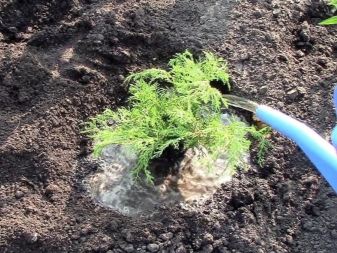
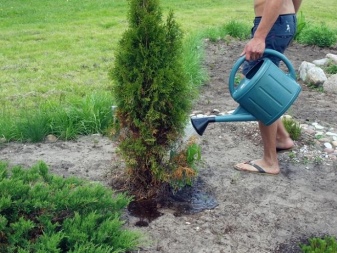
How to determine if you need watering
You can make sure it's time to water in a simple way. You will need to check the soil from a depth of 15-20 centimeters. If you squeeze the earth in your hand, and it turns out to be dry and crumbly, it's time to carry out the procedure. With sufficient humidity, a dense lump forms. You can also assess the condition of the thuja itself, if it wilted, it's time to water.
However, we must not forget that excessive moisture can be harmful. The flow of fresh air to the root system is blocked, and this threatens to slow down the development and growth of the tree. The soil should be deeply saturated with water. To avoid sunburn, do not spray when direct sunlight falls on the thuja.
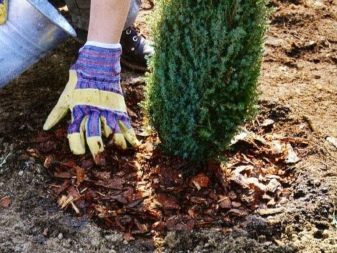
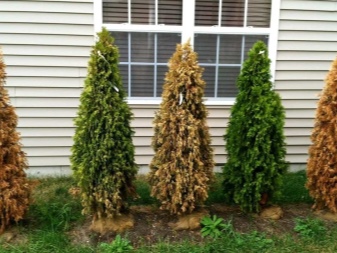
Watering and sprinkling mode
Adult plants, like seedlings, need moisture. Moreover, it should come not only from the soil. Regular watering will ensure the normal development and life of the thuja. Lack of water leads to a deterioration in appearance. The branches become brittle and the needles fade.
Regarding the regimen, in mature trees it is the same as in seedlings. You need 1 bucket of water once a week, during drought and heat - every 2-3 days. The lack of moisture is immediately visible. In thuja, the upper part of the crown begins to turn yellow, and many cones form quite quickly.
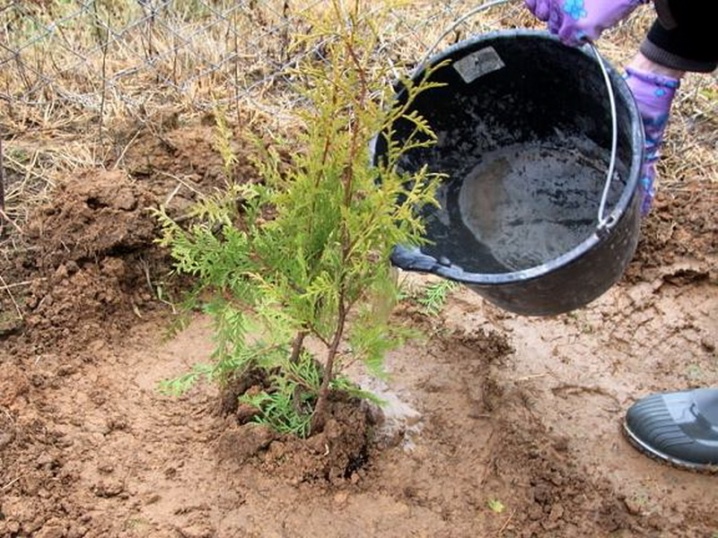
It is better to water this decorative tree in the morning or in the evening, and this should be done very carefully. Sprinkling helps to remove dust and dirt, freshen the thuja, in addition, contributes to the appearance of a pleasant pine smell. This procedure will never be superfluous; if desired, you can spray the plant 1-2 times a day.
For the care of thujas, see the next video.



































































The comment was sent successfully.